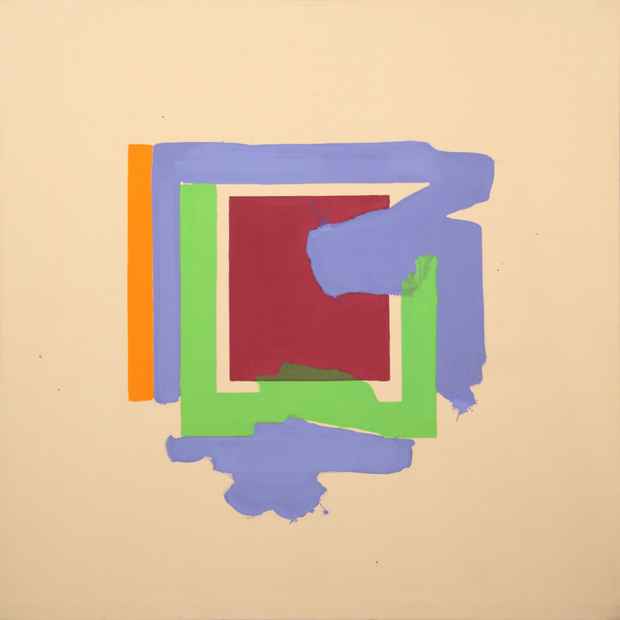Marc Vaux "Full House: Paintings from 1964"
Bernard Jacobson Gallery

This event has ended.
Bernard Jacobson presents Full House: Paintings from 1964 by the renowned British artist Marc Vaux on the occasion of the artist's eightieth birthday.
Marc Vaux first came to prominence in 1960 when his work was included in the landmark exhibition Situation held in London. Since then Vaux has continually developed his non-figurative painting style, exploring a range of different media from drawing and painting to three-dimensional reliefs and sculpture. The current exhibition focuses on a group of large, square paintings all executed in 1964 - a coherent and visually exciting body of works which mark the culmination of Marc Vaux's early period.
A student at London's Slade School of Art during the late 1950s, Marc Vaux became increasingly interested in American painting, first fascinated by the Abstract Expressionist Willem de Kooning, later by the controlled abstract paintings of Ellsworth Kelly. In 1959, the Tate Gallery's exhibition The New American Painting further influenced Vaux, leading him to produce large-scale works and adopt a reduced or monochromatic palette.
The tension between authorship and objecthood, the random and the rational has always been of interest to Vaux. In the 1960s Vaux developed a symbolic, pictorial depiction of these age-old opposing forces, where the painterly gesture intersects minimalist, crossed lines cutting through the canvas. Here Vaux explicitly continued the dialogue between Abstract Expressionism and the coming generations' preoccupation with removing any trace of the artist.
1964 marked a juncture in Vaux's work. Moving away from the cross structure of previous works, Vaux began to paint within and out of a square form, sometimes rotated into a diamond. The year also signaled a dramatic shift in his palette. In the previous year George Rowney started manufacturing acrylic paint, which Vaux has celebrated as one of the great artistic developments of the age. The new quick drying paint allowed new developments in his work such as letting the paint stain unprimed canvas and flow in ways which would be impossible with oil paint. Influenced by Cezanne and Mattise, Vaux began to explore colour as a signifier of feeling; colour was used freely without being attributed to any rationalizing order. Similarly the dichotomy between the oppositional forces of the gesture and form become increasingly blurred in this period. The interaction between the two is more ambiguous and in many works the box form becomes the gesture.
The paintings from 1964 deal with two strands of artistic thinking. They suggest conflict, but also co-existence. They deal with a universal human questioning of the presence of sublime beauty in the rational and reasoned day-to-day. Vaux's work celebrates modernity and its achievements, but also seeks to capture rare, fleeting beauty.
Born in Swindon, Wiltshire in 1932, Vaux attended the Swindon School of Art, before completing his art studies at the Slade School of Art in 1960. He also taught art for many years, becoming Head of Painting at Central St. Martin's College of Art and Design, London, before retiring from teaching in 1989 to concentrate on his own work. Marc Vaux has exhibited widely in the UK and abroad and his work is represented in many public collections including Tate, London; Arts Council of Great Britain; Victoria and Albert Museum; City Art Gallery, Leeds; York Art Gallery; and Folkwang Museum, Essen, Germany.
[Image: Marc Vaux "Incursion" (1964) Acrylic and charcoal on canvas 172.7 x 172.7 cm]
Media
Schedule
from November 15, 2012 to December 21, 2012
Opening Reception on 2012-11-14 from 18:00 to 20:00